A gastronomical tour of India can lead you to many places. And homes! Our dinner last weekend was one such food tour. The Park, New Delhi is holding a unique food festival Raagas & Recipes 2.0 at their restaurant “Fire” where we tasted some of the delicacies from a Mathur household. The spread focuses on Mathur-Kayastha cuisine served in the milieu of Ragas playing in the background. The festival has been curated by Ms. Anoothi Vishal, a renowned food writer, and critic who hails from a Kayastha family.
Contents
Kayastha Community of India
Kayastha is a community that does not fall under India’s conventional Hindu caste system – Brahmin, Kshatriya, Vaishya, and Shudra. Kayasthas were writers or scribes who would work in administrators’ offices, record keepers, and so on. This group is spread in many parts of India, namely zones of North India, Maharashtra, and Bengal.
PIN IT FOR LATER READ

Given the literacy rate among the Kayasthas as well as the wide range of administrative knowledge in fields of law and taxes, they rose to prominence in many parts of India in ancient, medieval as well as colonial times.
The Mathur Food & Hospitality
Mathur is a surname for members of the Kayastha community who hail from the Mathura region now in Uttar Pradesh. On the inaugural evening of the food festival, Vishal took us through an enchanting food journey of the Mathur clan among Kayasthas.
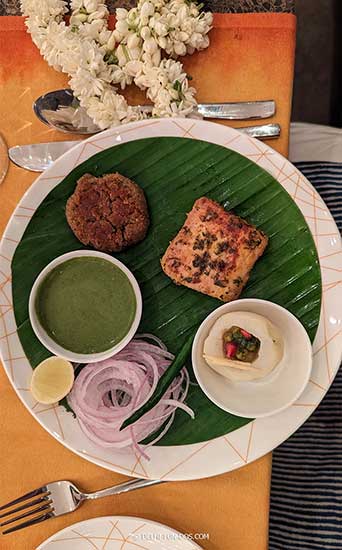
Starters – Methi fish, shami kabab, and veg kulle
Mathura is adjacent to Vrindavan and part of Vraj Bhumi, the land of Lord Krishna. One would expect a vegetarian diet in this part of the country. Yet we were surprised to see a balanced spread comprising vegetarian as well as non-vegetarian items. Vishal explained that the Kayasthas were traditionally clerics. They would work in the courts of kings and at other administrative offices in many Indian cities. Their food would be guided by local tastes and available ingredients.
Also Read: Food That We Would Not Mind Travelling for
In the Mughal period, the Kayasthas learned Arabic and Farsi languages. They were soon appointed as office bearers in the Mughal courts. Once the British took over, the Kayasthas picked up English and were forebears of the scribe culture in their office. Along with literacy, this community was exposed to the opulence of the Mughal era and later the sophistication of the British. The Kayastha lifestyle as well as their cuisine went through suitable refinement. Due to such foreign influences, non-vegetarian food gained entry into the Mathur-Kayastha kitchen. The cooking styles also went through changes to accommodate the new influences.
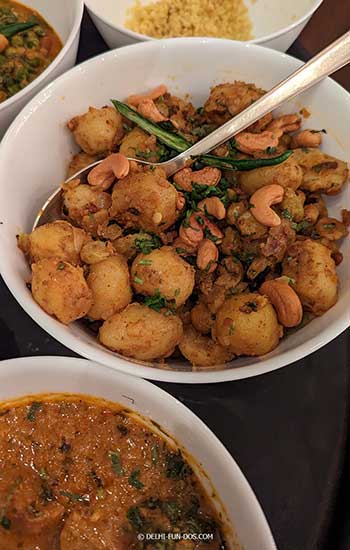
The Mathur group, hailing from Vraj known for its poetry, music, and art, were already culturally evolved. The food in a Mathur kitchen was reflective of their sophistication and fusion of Hindu, Muslim, and English cooking styles. This niche cuisine is on offer at the Raagas & Recipes food festival.
Kayastha Food Festival Menu
Vishal curated the festival and the family recipes were from her book “Mrs. LC’s Table: Stories About Kayastha Food And Culture”. The multicourse spread was segmented into vegetarian as well as non-vegetarian starters, a main course, an exciting selection of bread and rice, and desserts.
In terms of cooking styles, we could decode the use of a lot of whole spices which was a nod to the Mughal influence in the cuisine. Also, many of the dishes were prepared in the Mughal Dum style, a slow cooking process. The chats and Fruit Kulle took us straight to Banaras. Every dish was a melody but some items are just not to be missed.
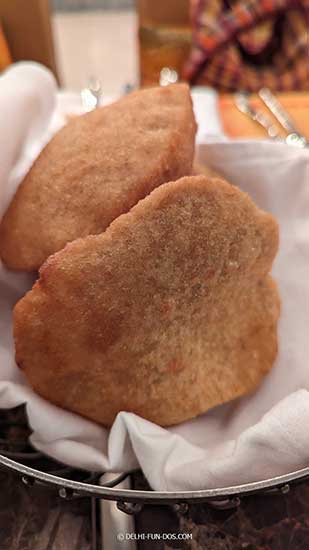
Bedmi Poori – The perfect accompaniment with Kayastha dishes
In fact, Bedabrata, the carnivore within us could not stop himself from taking a second helping of the extremely delicious Bhuna Meat. Sundeep ordinarily stays away from red meat. Surprisingly, he enjoyed this dish too. Bedmi Poori is something that is had with spicy potato curry in Delhi. However, the dal-stuffed Bedmi Poori turned out to be the perfect accompaniment to the meat.
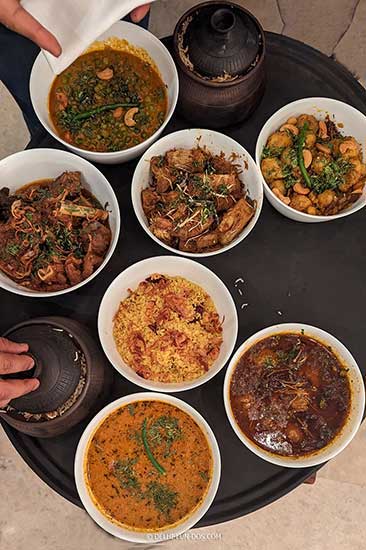
Main course at the Kayastha Food Festival
There was an array of simulated vegetarian dishes. The Dum Kathal (jack fruit) was a fine example of this decoy in food. Faux meat, therefore, was a part of Indian food way before veganism was in.
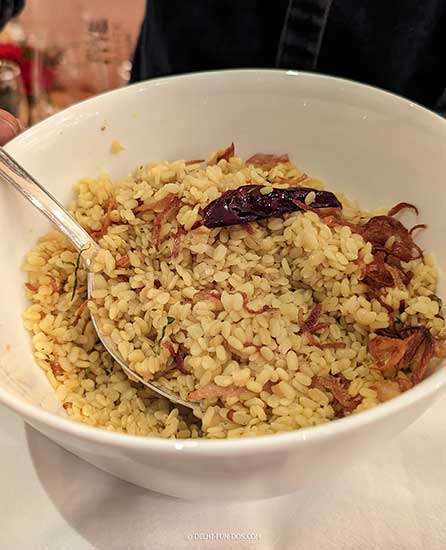
Sukhi Urad daal
We also loved the Sukhi Urad daal. This lentil dish was like a salad and worked as a palate cleanser among the spices. The fragrant Dad’s Yakhni Polao was as delectable as the cute name sounded.

Ending the dinner on a sweet note -Malpua with Rabdi and Lauki ki Lauz
The desserts were yummy and our vote goes to the Lauki ki Lauz, a barfi made with bottled gourd. Just the stuff for the season.
The Park New Delhi
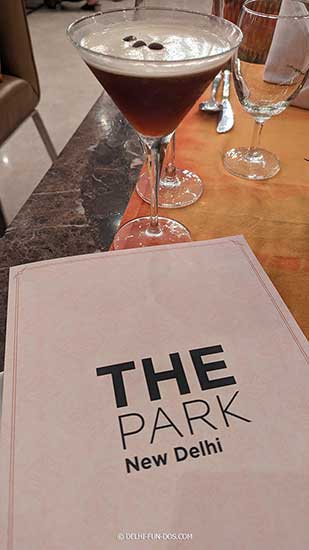
The Park is centrally located off Connaught Place. You can park inside if you are driving. Also, any app-based taxi or auto rickshaw should take you there.
The nearest metro station to The Park is Rajiv Chowk on the yellow line. It is about 10 minutes walk from the metro station.
Raagas & Recipes 2.0 Festival
The Raagas & Recipes 2.0 festival is from 19th May to 26th May 2023. It’s a limited edition, so book your table in advance.
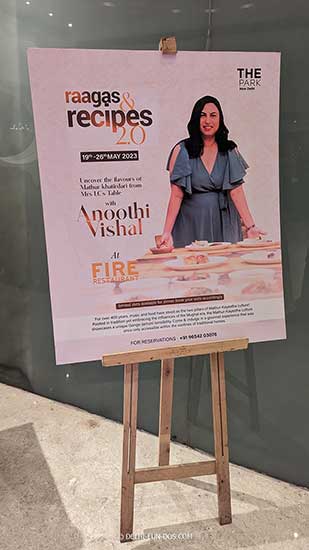
We threw all calorie caution to the wind and had so much of the delicacies served at the festival. No regrets, we loved the satiated feeling one has after an Indian feast. In order to enjoy Mathur hospitality firsthand, you must visit the Raaga and Recipe 2.0.

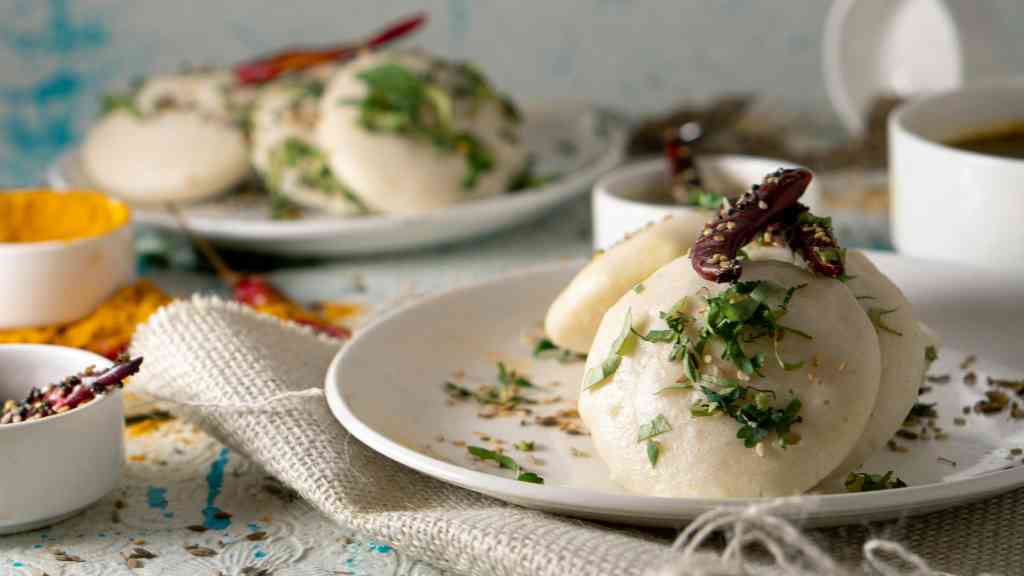
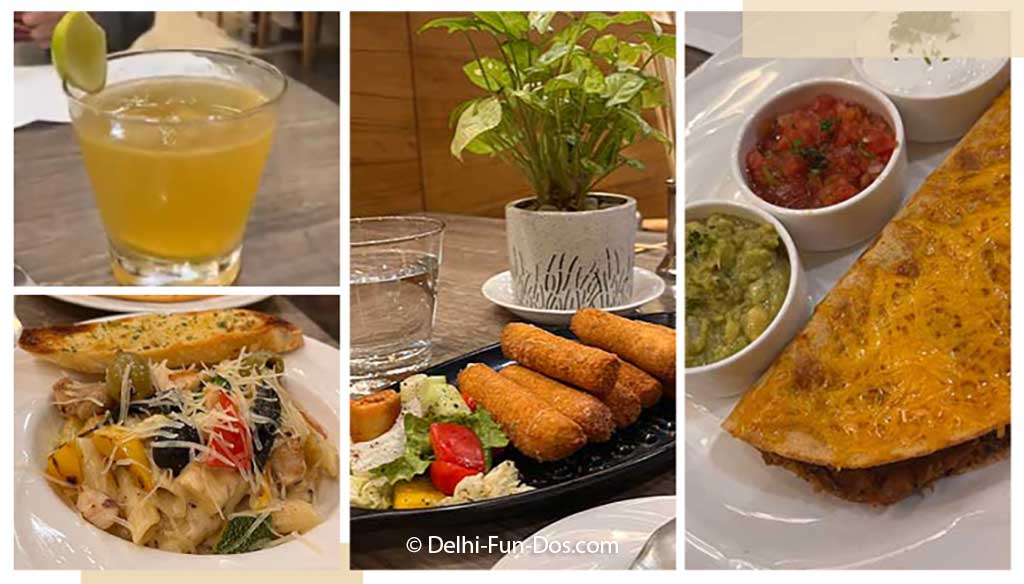
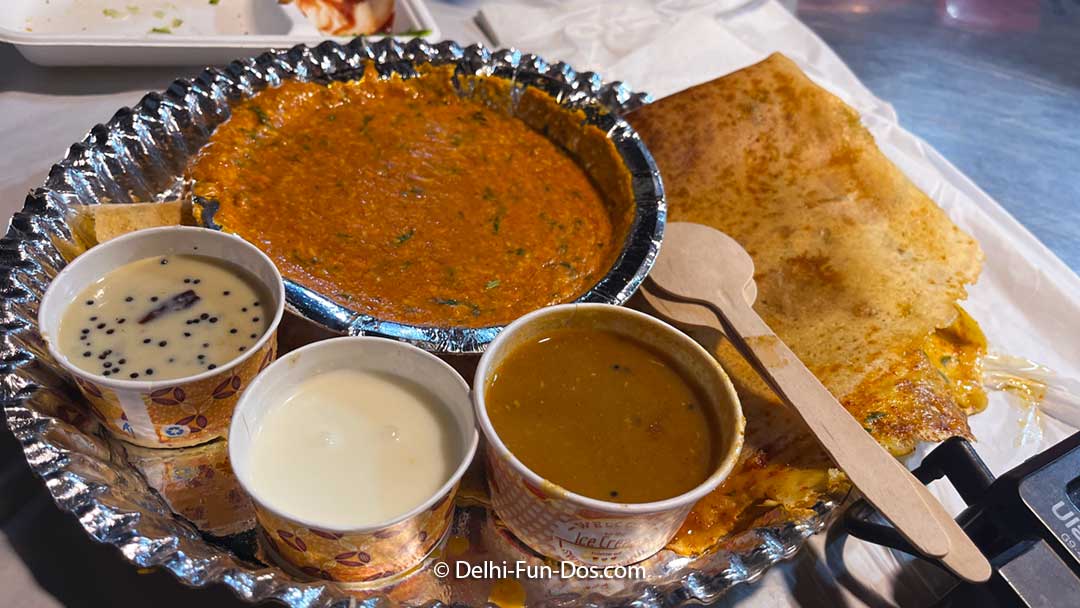
These are great recipes and look yummy. Well, it would be good to try them because never tried them yet. Thank you for sharing these recipes!
For recipes you may refer to Anoothi Vishal’s book
These all look yummy, I particularly love rice, fried rice and every flavor and assortment of it.
Good for you 🙂
Wow this is fascinating! I never knew about this festival! I have a lot of Kayastha friends and I love what they cook and have at home. Also I love the catering of Park! I really want to have the malpua 😁
Haha all yours 🙂
I wasn’t aware of the history of Kayasthas, thank you for sharing the knowledge. The food looks so tempting and yummy. I have been to the park during growing up years in Delhi and this post brought up so many happy memories..their spread is always mesmerising
We learnt so much too while having Kayastha food in Delhi.